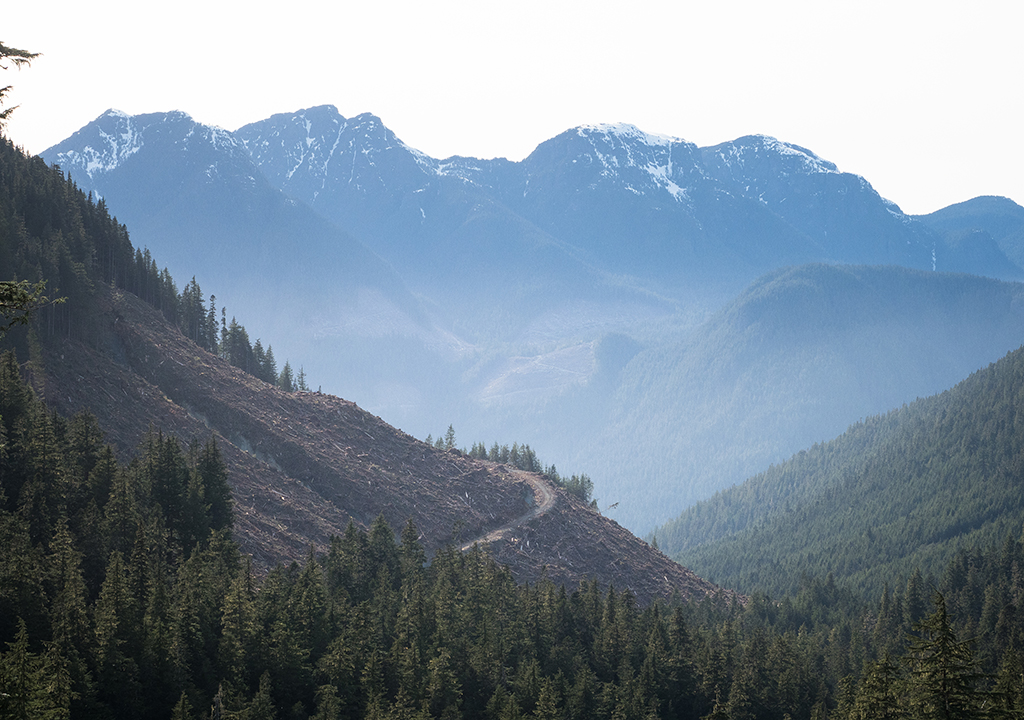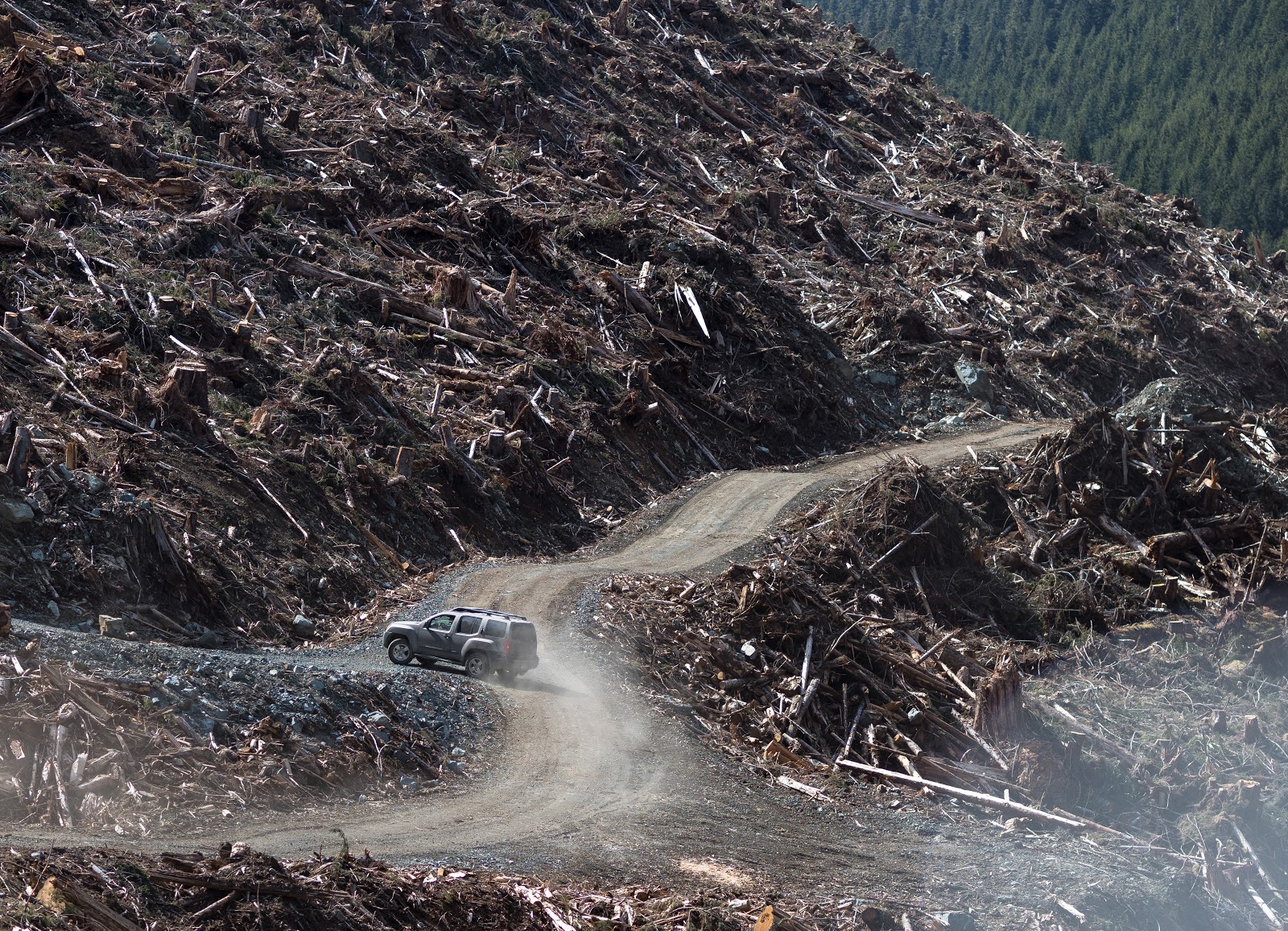In 2017, long before this year’s summer of blockades shook the province, logging company Teal-Jones purchased two small ads in both the Lake Cowichan Gazette and the Cowichan Valley Citizen. Following B.C. law, the company was announcing its new forest stewardship plan, which set out how it intended to log in the region — including at the now-infamous Fairy Creek — and asking for public comment.
Because B.C.’s forestry laws were written in 2004, when print media was still considered more important than online media, Teal-Jones wasn’t required to post the ad online. If you didn’t get the paper those weeks or lived outside of the Cowichan Valley, you probably would have missed it entirely.
There were other problems, too. As per B.C.’s forestry laws, the plan was written and developed by foresters employed by the company, and though it required sign-off by the region’s district manager, it didn’t actually tell the public or the government where it specifically intended to log or build roads.
Four years later, a 17-year-old from Washington state stumbled across the plan to log Fairy Creek by studying satellite imagery, sparking one of the largest acts of civil disobedience in Canadian history, in one of the last intact old-growth watersheds on Vancouver Island.
While it might be tempting to point the finger of blame at Teal-Jones for not doing adequate outreach, the company’s approach was guided by the province’s own laws — specifically, the Forest Range and Practices Act.
The act is “the bible” on how B.C.’s forests get managed, said Torrance Coste, national campaign director for the Wilderness Committee. “A lot of the conflict that we see in B.C.’s forests is because of it,” he said.
Last Thursday, following years of requests from First Nations, environmental advocates and local governments, the B.C. government finally introduced major changes to the act through Bill 23.
Katrine Conroy, minister of forests, lands, natural resource operations and rural development, said the proposed amendments will “put the government back in the driver’s seat” after decades of deregulated forest policy that put logging companies at the helm.
“This is reinserting a planning regime,” said Kevin Kriese, chair of the BC Forest Practice Board, an independent watchdog for B.C. forestry, who noted the province is one of the few forestry-rich regions across Canada and the U.S. with so many gaps in forest management. “We’re on the bottom quartile in terms of the kind of long-term planning that we do.”
Proposed amendments would scrap B.C.’s current industry-driven forest stewardship plans — like the one Teal-Jones outlined for the area containing Fairy Creek — in favour of forest landscape plans developed by the provincial government in consultation with First Nations and local communities.
But that’s only half of the puzzle, says Coste, who is still waiting to see how these amendments will impact forest ecosystems across the province. So far, those details are absent.
“Transferring power around, that’s an important half of the solution, but it’s only half the solution,” Coste said.
The amendments also raise critical questions about whether the province is taking its commitments to the Declaration on the Rights of Indigenous Peoples Act seriously.
They “didn’t go far enough on the recognition of inherent title and rights or the UN Declaration,” said Kukpi7 Judy Wilson, secretary-treasurer of the Union of BC Indian Chiefs and Chief of the Neskonlith Indian Band.
“We need better caretakership for our old-growth forest and our forest in general, and that can only be done by including Indigenous Knowledge and the proper title holders.”
What is the Forest and Range Practices Act?
First passed in 2004, the Forest and Range Practices Act was part of a wave of deregulation ushered in by the BC Liberal government under then premier Gordon Campbell. “Results-based” policies shrank the role of government in resource management by giving industries broad, government-sanctioned objectives they could decide how to fulfil.
The regime is often referred to as “professional reliance,” where government outsources oversight to professionals hired by the companies themselves. It extends beyond forestry, informing B.C.’s regulations around mining, fisheries, electricity and landfill management, to name a few.
A 2018 report on B.C.’s “professional reliance” regime found the act “bred a culture of deference” to the forest industry, reporting that some government staff felt it was inappropriate to challenge the professional foresters hired by logging companies.
“We are not aware of any other regulations in which the government has imposed upon itself such extensive restrictions to taking action to protect the environment,” wrote West Coast Environmental Law when it reviewed the act in 2004.
Replacing the 1990s-era Forest Practices Code, the act meant that the BC Forest Service was no longer responsible for approving or overseeing logging sites known as cutblocks. Instead, companies hired professional foresters to develop forest stewardship plans for “units” of forest where they planned to log.
Those units were often massive — in 2015, the Forest Practices Board found that the largest unit was about twice the landmass of Vancouver Island.
Within those units, companies were not required to disclose where they planned to log or build roads. Without those details, the province is hard-pressed to evaluate the cumulative impacts of logging.
Although the government assesses logging plans when it approves road or cutting permits for individual cutblocks, those permits are assessed one by one. “It’s hard to tell what the total impact is,” said Kriese.
In 2019, the government passed a FRPA amendment under Bill 21 requiring companies to disclose future roads and cutblocks through a publicly accessible app, but that app has yet to be introduced.

Within the act itself, the rules are notoriously flimsy, said Jens Wieting, senior forest and climate campaigner for the Sierra Club BC.
The act lists a set of provincial objectives for forestry, including protecting things like biodiversity, soils, water and visual quality. In the corresponding regulations, the government provides some guidance on how to meet those objectives, but only so long as the accommodation does not “unduly reduce the supply of timber from British Columbia’s forests.”
This clause, advocates say, is a loophole that can allow companies to disregard environmental considerations if they impact their bottom lines.
“This really opens the door to water down and weaken things until they become unrecognizable,” said Wieting.
Ultimately, said Kriese, forest stewardship plans aren’t designed to manage ecosystems. “It’s a logging plan, but it’s not a forest management plan,” said Kriese. “The model is that licensees propose, and the government basically approves.”
The current amendments proposed to the act under Bill 23 work to change that by replacing forest stewardship plans with 10-year forest landscape plans, developed through land use planning processes with government and “First Nations, local communities and other stakeholders.”
The province said those plans will provide opportunities for First Nations and communities to provide input on forest management and better manage the cumulative effects of forest activity.
Ministers will be required to sign off on forest operations plans that detail harvesting and road-building activities and will have more jurisdiction to say no to plans that don’t meet the government’s specifications. According to the province, this site-level logging information will also be made available to the public.
“This is a way of ensuring that the province is the landlord of the forests again,” said Conroy.
Indigenous rights and the new law
Bill 23, Conroy said, will align B.C.’s forest management with its commitments to the Declaration on the Rights of Indigenous Peoples Act. The changes will give “Indigenous voices back to managing the forests on their traditional territory,” she said.
But Kukpi7 Wilson thinks the amendments still have “a long way to go” before the act is aligned with the recognition of First Nations’ inherent title and rights. Even under the updated act, the chief forester will hold a considerable amount of power over the fate of the forests.
The amendments indicate that if a nation doesn’t consent to a forest landscape plan in its territory, it must alert the chief forester within 60 days of receiving the plan from the government. The chief forester is then required to “meet with an Indigenous governing body and attempt to achieve consensus.”
The wording doesn’t meet the bar for First Nations’ rights to free, prior and informed consent, as enshrined in the Declaration on the Rights of Indigenous Peoples Act, said Kukpi7 Wilson.
The process of drafting the amendments also came up short, according to Charlene Higgins, chief executive officer of the First Nations Forestry Council, who said the amendments didn’t take First Nations’ concerns into account, including protections for cultural values.
“The consultation process was flawed and doesn’t reflect changes to FRPA nations wanted.”
In an emailed statement, the Ministry of Forest, Lands and Natural Resource Operations said that based on First Nations’ input, it had added wording to the amendments around shared decision-making to help align the act with the Declaration Act.
Higgins acknowledged those additions but said that since the full implementation of the Declaration Act is still nascent, the changes will require additional legislation to enable First Nations’ consent. “The point is future down the road,” she said.
Nations also need to be equipped to participate in the forest landscape planning processes, Higgins added. Unless First Nations have developed relationships with the province through ties like government-to-government tables and have already planned out their own land use objectives, she worries that some nations’ interests will get ignored.
“Many Nations are going to be left out of this process, because they don’t have the resources and information they need to participate,” she said.
What does Bill 23 mean for old-growth forests?
So far, the bill doesn’t mean much.
While the amendments contained in Bill 23 signal a departure from the professional reliance regime, it’s still unclear what that means for the health of B.C.’s forests. That’s because the amendments continue to define ecological values in broad terms like “biodiversity” and “soils,” leaving out key details around how those values will be upheld by the regulations the government writes after the legislation is passed.
For example, B.C.’s Old Growth Strategic Review Panel found that ecosystems that fall below 30 per cent of their natural abundance with old trees present a high risk for biodiversity loss. It’s unclear whether the province intends to create regulations to protect biodiversity by preserving ecosystem types.
Meanwhile, the “unduly reducing supply of timber” clause — seen by many First Nations and environmentalists as a linchpin of B.C.’s deregulated forestry regime — remains.
BC Green Party Leader Sonia Furstenau sees the tendency to offload critical decisions to regulations — which don’t get debated in the legislature — as a growing trend within government.
“What that means is, you’re being asked to debate and vote on a bill that you don’t fully get to see all of the implications [of], or all of the final legislation that’s going to be in it,” she said.
Kriese suggests that there are reasons to work out details around biodiversity and old-growth protection outside of enshrined legislation. That’s because each region is unique, he said, and has different requirements for values and protections. Forest landscape plans, he said, provide an opportunity to do that on-the-ground work.
But whether those plans will arrive in time to protect the province’s last remaining old growth is another question.
There is no stated timeline on when the regulations set forth in Bill 23 will be developed. Switching over from the old regime to the new landscape plans will take eight to 10 years, the province estimates.
For those waiting on these plans to ensure improved ecological protection, that wait time “is going to be a really tough pill to swallow,” said Kriese.
Part of the reason the wait will be so long is because the government lost significant administrative capacity during the deregulation era.
“We’re 20 years behind on doing this,” said Kriese. “I think it should be faster.”
Furstenau agrees that time is running out for B.C.’s forests. Instead of waiting on future regulatory changes or land use planning processes, Furstenau wants to see a clear indication in the act that big changes are coming.
“We are in a massive species die-off,” she said. “It seems to me as a government in a time like this, that we should be very mindful of the global responsibility we have when it comes to species at risk and biodiversity protection.”
After decades of forest policy focused on maximizing timber supply and clear-cut logging, Furstenau wants to see a decisive turn.
“It’s like, OK — we’ve put the government back in the driver’s seat. But now I’d like to see the map of where we’re going.” ![]()
Read more: BC Politics, Environment

















Tyee Commenting Guidelines
Comments that violate guidelines risk being deleted, and violations may result in a temporary or permanent user ban. Maintain the spirit of good conversation to stay in the discussion and be patient with moderators. Comments are reviewed regularly but not in real time.
Do:
Do not: